Art Fairs
Meet 3 Cutting-Edge Artists Pushing the Boundaries at Art Dubai
These artists confront subjects ranging from physical encounters under occupation to fossil fuels.
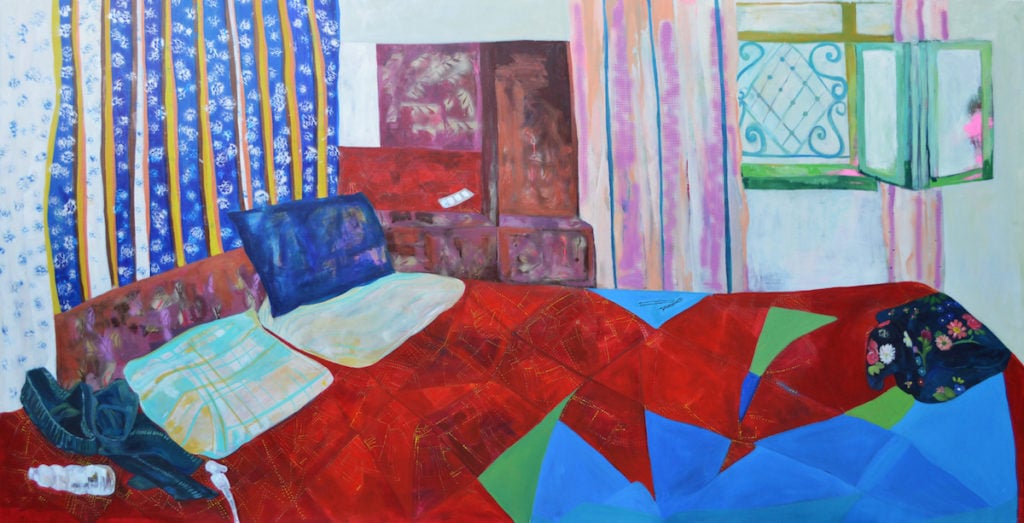
These artists confront subjects ranging from physical encounters under occupation to fossil fuels.

Traditional robes—white for men, black for women—appear alongside business suits and t-shirts at the Art Dubai fair, taking place this weekend at the palatial Madinat Jumeirah hotel, set on its own private beach.
Contrasting with that natural touch, the rest of the surrounding emirate is chockablock with skyscrapers and is crowned by the 2,720-foot-tall Burj Khalifa, the world’s tallest skyscraper, built from the ground up with oil money over the last few decades.
The fair’s 11th edition features 94 galleries hailing from some 43 countries, which, the organizers note, makes this edition—under the leadership of new director Myrna Ayad—the fair’s most international to date. The global quality of the fair echoes that of the state itself, where the vast majority of the population is comprised of expatriates.
Three artworks by artists of Middle Eastern origin offer the best examples of the fair’s most innovative, challenging work.
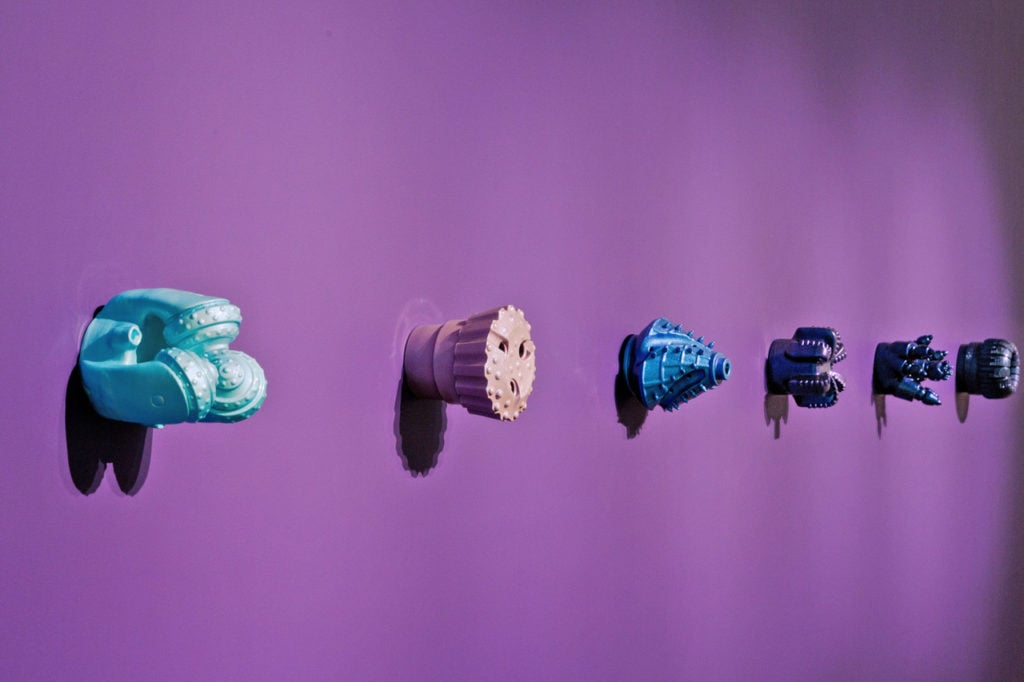
Monira Al Qadiri, Spectrum 1 (2016). Courtesy Athr, Jeddah.
Monira Al Qadiri, Athr Gallery, Jeddah
What will 21st-century mankind’s dependence on oil, and the infrastructure that supports the oil industry, look like to archaeologists thousands of years from now? This is one of the questions that underlies Monira Al Qadiri’s 3-D-printed sculpture Spectrum 1 (2016), which takes the shape of six drill bits used to extract oil from the earth.
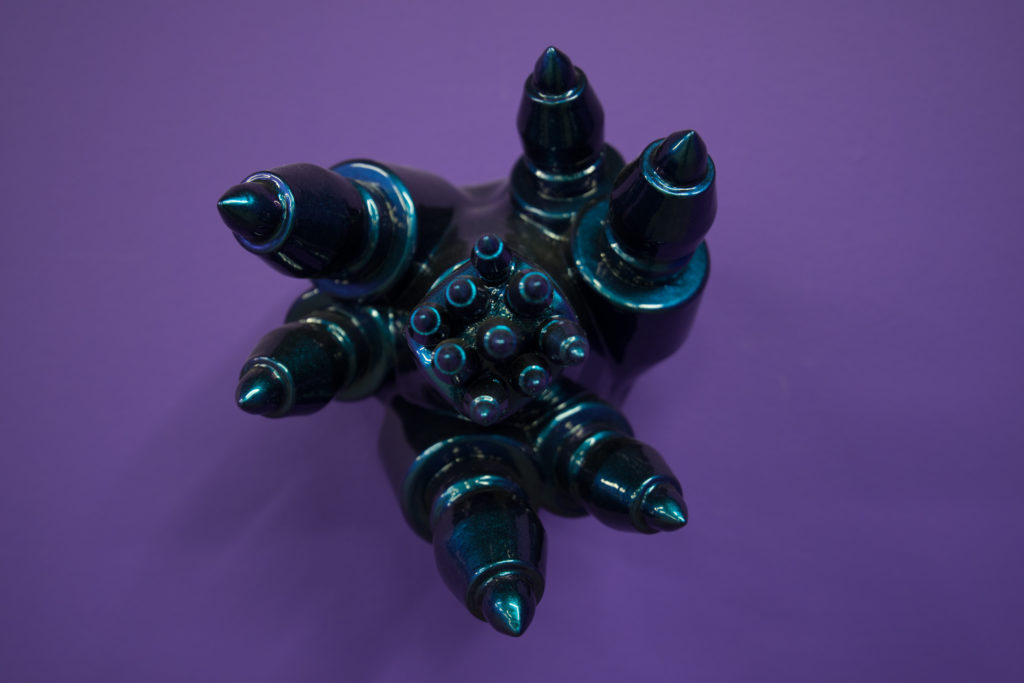
Monira Al Qadiri, Spectrum 1, detail (2016). Courtesy Athr, Jeddah.
A Kuwaiti native, Al Qadiri, who’s also a member of the curatorial-darling collective GCC, draws a connection between that country’s historical pearl trade and the fossil fuel industry that supplanted it; both oil and the pearl bear a shimmering finish, one that she emulates in her sculptures, some of which look like menacing, horned animals. The similarities between the substances don’t stop at the visual, according to Maryam Bilal, the gallery’s curator and artist liaison; just as the pearl trade has been supplanted as Kuwait’s main source of income, so will the oil industry one day come to an end.
The sculptures, which come in an edition of three, will set you back $18,000.
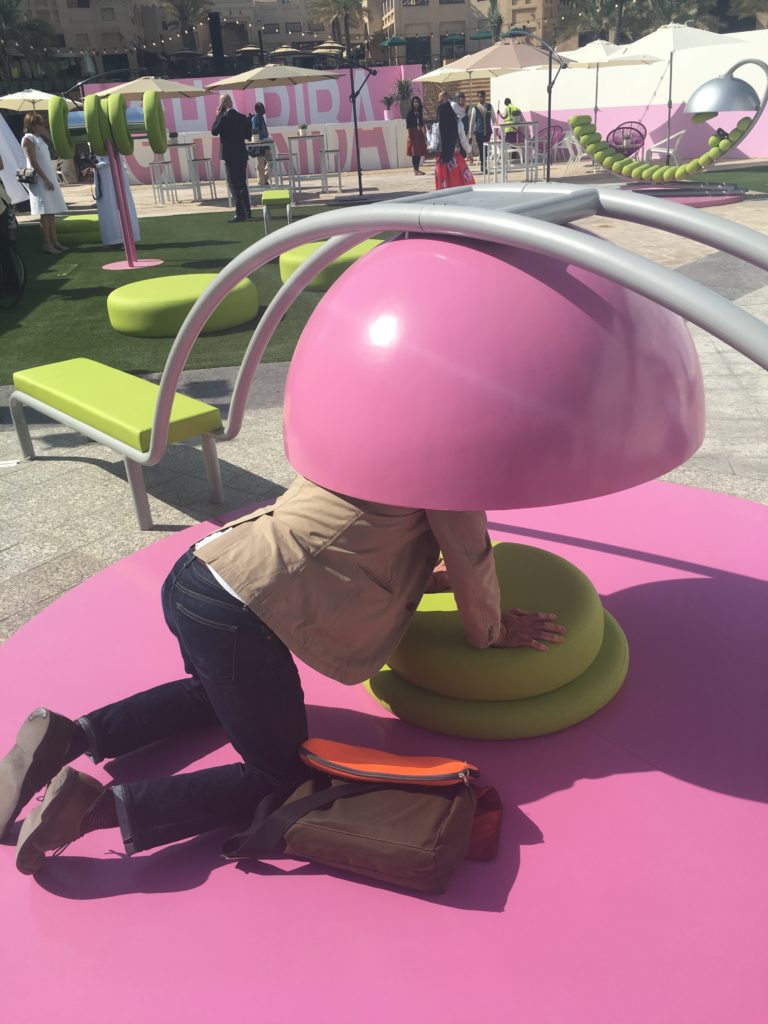
A visitor checks out Meriem Bennani’s Ghariba/Stranger (2017), an Art Dubai commission.
Meriem Bennani, Art Dubai Commission
Sited outdoors under the blazing sun, the Moroccan-born, New York-based Meriem Bennani’s work takes the form of cartoonish, brightly hued lounge chairs, benches, and hair-salon thrones that harbor videos in which the artist’s female relatives play themselves in modes that toggle between documentary, reality TV, and homemade footage. One relative sings about frustrated love at a family gathering; one talks about her dog, who, she says, gets more attention than she does.
It’s not always clear to Bennani, she admitted, what is a performance by her subjects and what is a moment of unvarnished, genuine identity—just as, one surmises, it might not be clear to the performers themselves.
“I’m from a generation that wants it all,” the artist said, meaning a great job but also the opportunity to read books, do yoga, and go out at night. Similarly, she wants to create works in every genre, that deliver the viewer everything, every time. The full installation will cost something like $45,000, individual works in the region of $15,000.
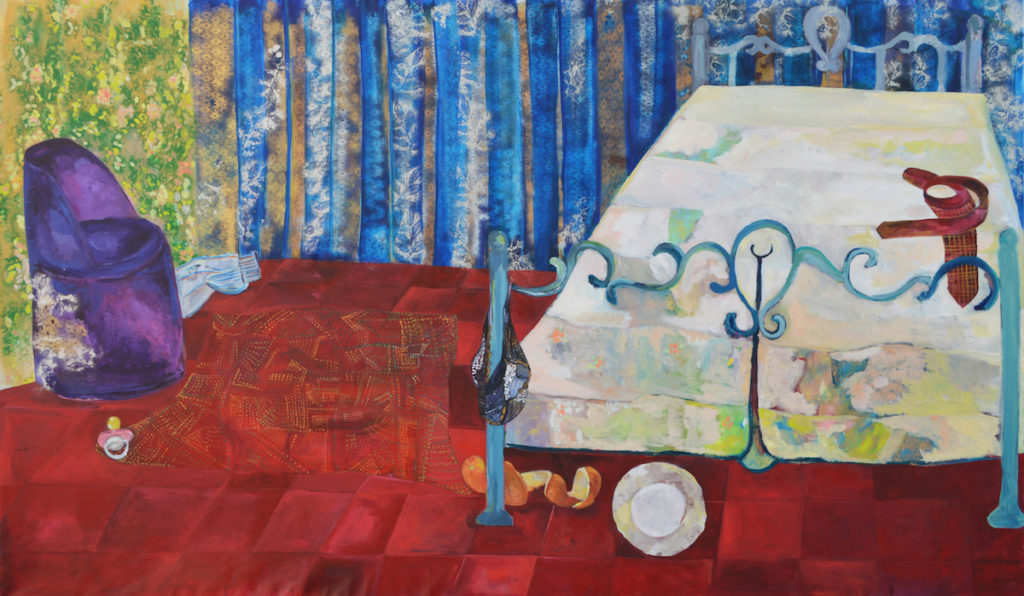
Rana Samara, Intimate Space IX (2015). Courtesy Zawyeh Gallery.
Rana Samara, Zawyeh Gallery, Ramallah
Rana Samara insinuates into public view a subject that her conservative Palestinian society might wish to keep under wraps, Zawyeh Gallery advisor Sulieman Mleahat told me—namely sex, which is hinted at in gorgeous paintings of domestic spaces that evoke Bonnard and Matisse.
But the paintings’ backstory is hardly one you might associate with those affluent Western masters, as is revealed in a passage from the artist’s statement describing the inspiration she found while walking in the Al-Amari refugee camp in Ramallah: “I began wondering about the sex life of couples living in such condensed spaces that afford them almost no privacy.” Sprinkled across the colorful interiors are clues like a few Viagra pills, a bottle of lubricant, and a piece of discarded lingerie.
A set of handkerchiefs are embroidered with various imagery that refers to a tradition in which a bride’s virginity is confirmed by a bloody handkerchief from the wedding night. One shows a vagina in red thread; another has a piece of Jordanian currency pinned to it in a blunt indication that women are “bought” in marriage, as Mleahat characterized it.
The paintings go for up to $25,000, the handkerchief work for the same price.